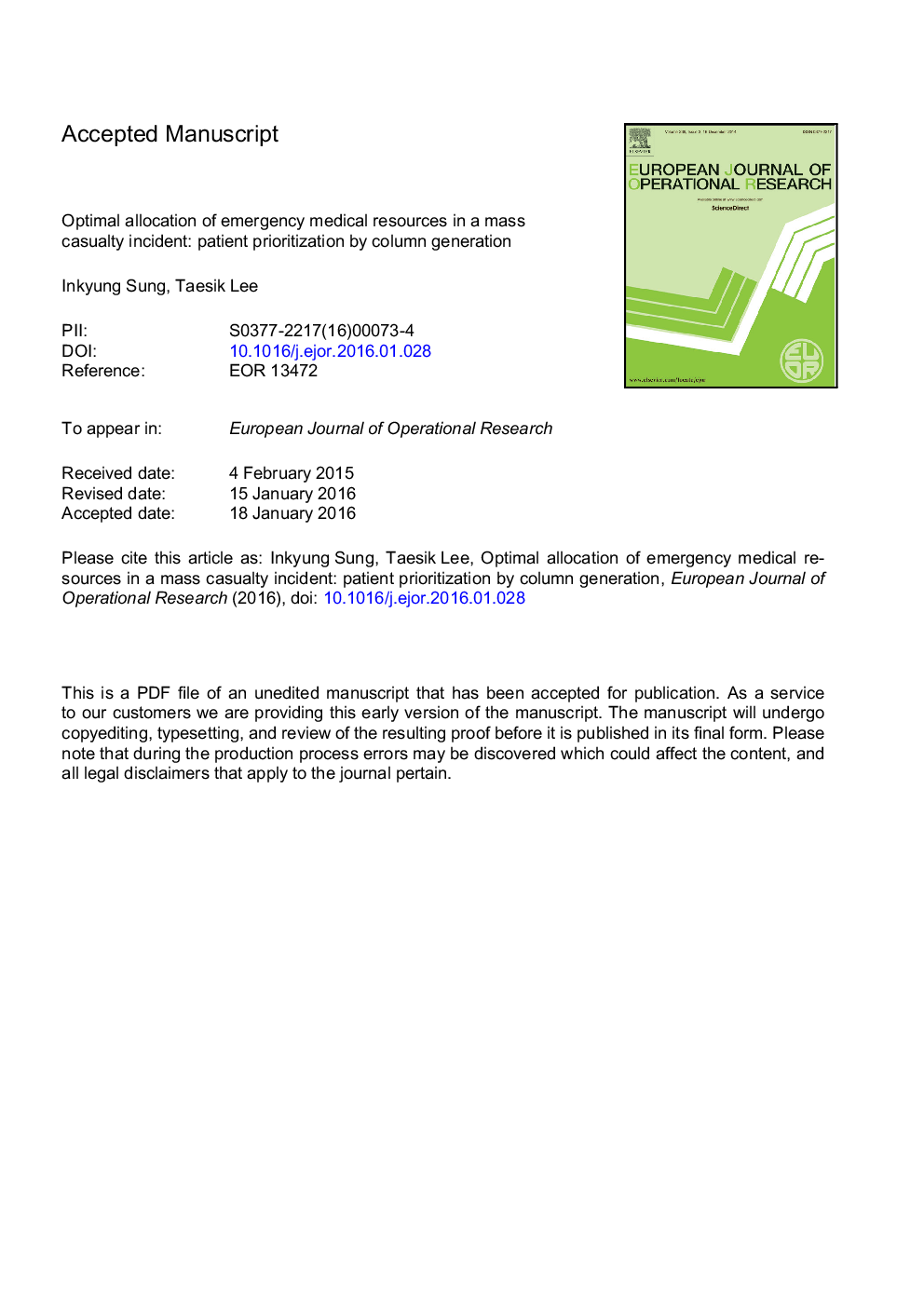| Article ID | Journal | Published Year | Pages | File Type |
|---|---|---|---|---|
| 6895740 | European Journal of Operational Research | 2016 | 31 Pages |
Abstract
Mass casualty incidents create a surge in demand for emergency medical services, and this can often overwhelm the emergency response capacity. Thus, it is critically important to ration the emergency medical resources based on prioritization to maximize the lifesaving capacity. In a traditional triage scenario, the priority for receiving care is solely determined by a patient's criticality at the time of assessment. Recent studies show that a resource-constrained triage is more effective in providing the greatest good to the maximum number of patients. We model this problem as an ambulance routing problem, and determine the order and destination hospitals for patient evacuation. This is formulated as a set partitioning problem, and we apply a column generation approach to efficiently handle a large number of feasible ambulance schedules. We show that the proposed algorithm with a column generation approach solves the problem to near optimality within a short computation time, and the solutions derived by the algorithm outperform fixed-priority resource allocations.
Keywords
Related Topics
Physical Sciences and Engineering
Computer Science
Computer Science (General)
Authors
Inkyung Sung, Taesik Lee,
